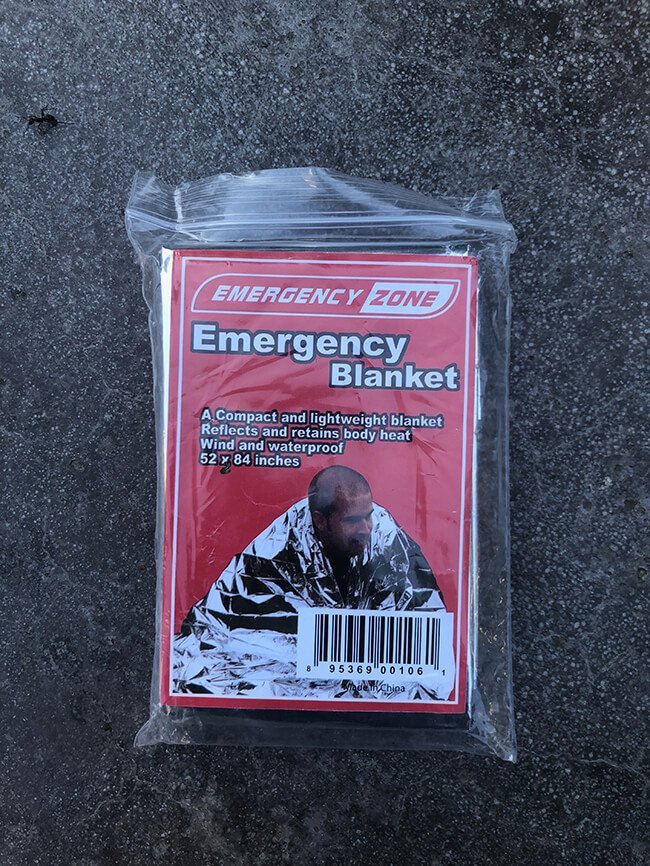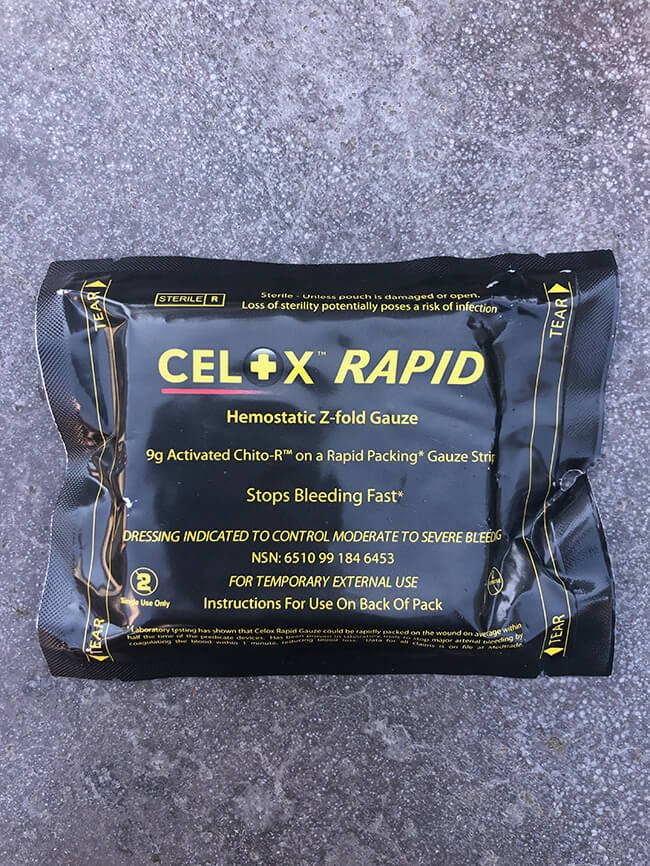What is an IFAK and Why It Matters on the Range
An Individual First Aid Kit (IFAK) represents far more than a compact medical kit; it’s a trauma kit engineered for high-risk environments where every second counts. Originally developed for military and law enforcement officers, today’s versions equip first responders, outdoor enthusiasts, and civilian shooters with the tools to treat or prevent severe injuries before professional medical help arrives.
Each IFAK pouch typically includes critical items such as tourniquets, pressure dressings, chest seals, and hemostatic agents—components specifically chosen to handle life-threatening injuries requiring immediate medical attention. Effective organization ensures these tools remain accessible and functional, even in stressful or time-sensitive situations.
Used by military personnel and combat medics, this personal medical kit bridges the gap between injury and survival. Whether secured to body armor or mounted on a range belt, it delivers lifesaving interventions at the point of injury, significantly reducing preventable deaths caused by massive hemorrhage or airway obstruction.
Understanding what’s inside this first aid kit underscores why it remains a foundation of modern tactical preparedness for anyone operating in uncertain or dynamic environments.
Core Trauma Management Tools in Every IFAK
Here’s how the essential components inside an IFAK help control bleeding, protect airways, and stabilize casualties until advanced care is available.
Tourniquet types
A tourniquet remains the most life-saving instrument in any first-aid system. Units like the CAT and SOF-T provide rapid bleed control in seconds—particularly during gunshot wounds or severe trauma. Consistent training in tourniquet use builds confidence and muscle memory, allowing users to act decisively when it matters most.
Hemostatic dressing basics
Modern hemostatic agents, such as Combat Gauze, use kaolin, a clot-promoting mineral that accelerates coagulation and halts exsanguination. These advanced supplies for treating massive hemorrhage appear in every emergency medical kit, offering faster stabilization in high-risk environments where time is critical.
Pressure dressing setup
To maintain clot stability, a pressure bandage or elastic dressing secures the wound after bleeding control. When combined with chest seals, these dressings manage sucking chest wounds, helping maintain respiratory function until emergency medical services (EMS) arrive.
By mastering these components, users reinforce their understanding of the MARCH Algorithm, which prioritizes interventions by urgency in trauma care.
TCCC and the MARCH Algorithm: How Doctrine Shapes Kit Design
The Tactical Combat Casualty Care (TCCC) framework and MARCH Algorithm form the foundation of every modern IFAK and AFAK. These doctrines outline the logical sequence of trauma management—addressing massive hemorrhage, airway compromise, and circulatory failure—to preserve life in both combat and civilian emergencies.
Public initiatives such as Stop the Bleed extend these principles to first responders and civilians alike, emphasizing practical skills that can be applied before professional medical assistance arrives. This alignment ensures that every medical kit designed for trauma response reflects globally recognized standards of care.
Understanding doctrine empowers shooters and tactical users to customize their first aid kits intelligently, connecting formal training with personal preparedness.
The MARCH Algorithm represents just one phase of effective emergency management. Understanding how your IFAK fits into a broader preparedness strategy becomes clearer when you review the five crucial phases of emergency preparedness: prevention, mitigation, preparedness, response, and recovery.
This ensures your trauma kit serves as one component of a complete safety system rather than an isolated tool.
Building and Customizing Your Range IFAK
Creating a custom IFAK is about balancing accessibility, capability, and environment. Each med kit should reflect the user’s mission profile, location, and likely threats.
Required components
Include tourniquets, pressure bandages, chest seals, Combat Gauze, and antiseptic wipes. These essential supplies have proven effectiveness for controlling severe bleeding and treating injuries encountered on the range. Always include nitrile gloves to minimize contamination risk during treating trauma or minor injuries.
Here are the contents of one of my basic trauma kits for the range.
- Tourniquet – C.A.T.® or SOF®-TT.W
- Olaes™ Modular Bandage 4″
- Celox™ RAPID – Hemostatic Gauze
- Gloves
- Trauma Shears
- Emergency Blanket








Add-on items
Consider optional additions such as epipens, moleskin, or a compact survival kit for extended versatility. AFAKs (Advanced First Aid Kits) might also include airway management tools or small splints to assist in multiple casualty situations.
While your IFAK focuses on trauma response, building a complete emergency response capability requires more than just bleeding control. Our guide to emergency kit essentials covers comprehensive disaster preparedness including water storage, food supplies, and communication tools that extend your readiness beyond immediate trauma care, critical for extended range sessions or remote shooting locations.
Storage and access tips
A tactical pouch should open flat, giving clear visibility and easy access to each compartment. Proper labeling and color-coding enhance deployment speed. Each kit is designed to ensure the contents list remains intuitive and efficient for preparedness under high-stress conditions.
Thoughtful customization also involves sourcing gear from trusted suppliers to ensure reliability in the field.
Top IFAK Brands, Tourniquet Options, and Kit Procurement
| Product / Kit | Key Features | Notes |
|---|---|---|
| CAT Tourniquet | US Army-approved; combat-proven | Standard issue for military personnel and law enforcement officers |
| SOF-T Tourniquet | Metal windlass, enhanced durability | Preferred by combat medics for its reliability under pressure |
| Bleed Control Kit | Simplified variant of an IFAK, includes essential items | Ideal for workplaces or range facilities |
| Custom Range IFAK | Tailored configuration with quality components | Suited for outdoor enthusiasts and dedicated shooters |
Procurement choices depend on operational context. Civilian kits emphasize preventable deaths and minor injuries, while IFAKs and AFAKs provide complete solutions for severe trauma and life-saving applications. Most are specifically designed to address life-threatening injuries while maintaining portability and quick access.
When integrated with body armor or tactical vests, a compact IFAK guarantees rapid access to items like tourniquets, even in active shooter or high-stress situations.
Applying IFAK Skills: Realistic Range and Tactical Scenarios
Scenario: extremity bleed
A shooter sustains massive hemorrhage from a gunshot wound. Immediate application of a tourniquet above the wound halts bleeding within seconds. This example highlights how a first aid kit delivers immediate trauma care when every moment counts.
Scenario: chest wound
A responder deploys a chest seal to prevent further air intake and lung collapse. Ongoing assessment maintains airway patency while awaiting emergency medical extraction.
Scenario: multiple casualties
During a complex range incident, a Range Safety Officer organizes supplies for treating victims while first responders coordinate care for multiple casualties. Collaboration between civilians and EMTs demonstrates the importance of cohesive training and reliable gear.
Competence with an IFAK transforms high-stress situations into structured responses, ensuring users remain ready for any emergency that might occur.
Frequently Asked Questions
What’s the difference between an IFAK and a regular first aid kit?
An IFAK focuses exclusively on life-threatening injuries such as massive hemorrhage, airway compromise, and sucking chest wounds. Standard first aid kits address minor injuries like cuts, burns, or sprains. The IFAK pouch contains critical items like tourniquets and chest seals—tools designed for severe trauma rather than everyday incidents.
How often should I replace items in my IFAK?
Inspect your trauma kit every three months. Hemostatic agents like Combat Gauze typically expire within 3-5 years, while tourniquets should be replaced if the windlass mechanism shows wear or damage. Chest seals and pressure bandages remain stable longer but should be cycled out if packaging integrity is compromised.
Do I need formal medical training to use an IFAK effectively?
Formal training isn’t legally mandated, but it’s operationally essential. A tourniquet applied incorrectly can cause permanent nerve damage; chest seals placed improperly may worsen respiratory distress. Courses teaching bleeding control, wound packing, and trauma assessment ensure you understand when and how to deploy each critical item. Organizations offering TCCC protocols and Stop the Bleed certification align civilian training with standards used by military personnel and first responders.
What’s the difference between an IFAK and an AFAK?
An AFAK (Advanced First Aid Kit) expands on IFAK capabilities by including airway management tools beyond basic nasopharyngeal airways—potentially decompression needles, cricothyrotomy kits, or additional hemostatic agents. AFAKs also accommodate multiple casualty scenarios with redundant supplies. While IFAKs focus on individual self-aid or buddy-aid, AFAKs support broader emergency medical interventions and extended care timelines.
What’s the minimum cost for a functional IFAK?
A baseline bleeding control kit containing one CAT tourniquet, Israeli pressure bandage, Combat Gauze, and chest seal costs $75-$125. Premium configurations with tactical pouches, redundant tourniquets, and additional hemostatic dressings range from $150-$300. Investing in quality components from established suppliers—North American Rescue, TacMed, or similar—ensures reliability when high-stress situations demand immediate function.
Final Thoughts: Preparedness Beyond the Kit
Owning an IFAK represents the starting point, not the finish line. The medical kit itself holds no value without the training to deploy it effectively under pressure. Every tourniquet, pressure dressing, and chest seal requires deliberate practice to build the muscle memory that separates hesitation from life-saving action.
Regular training with Stop the Bleed courses or TCCC-aligned programs ensures that treating trauma becomes instinctive rather than improvisational. Whether you’re a Range Safety Officer, outdoor enthusiast, or tactical user, competence with your first aid kit transforms you from a passive bystander into someone capable of immediate medical intervention when it matters most.
Integrate your IFAK into your range routine. Keep it accessible, inspect critical items quarterly, and replace expired hemostatic agents or damaged tourniquets immediately. A well-maintained trauma kit paired with consistent training reduces preventable deaths and reinforces the principle that preparedness isn’t optional—it’s a responsibility every shooter should embrace.
The difference between carrying an IFAK and knowing how to use it often determines whether someone survives the minutes before professional medical help arrives.


